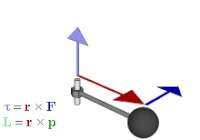
Photo from wikipedia
We present a seismological method for probing the solar atmosphere above sunspot umbrae with three-minute oscillations. Our technique allows us to estimate both the vertical distance between atmospheric layers and… Click to show full abstract
We present a seismological method for probing the solar atmosphere above sunspot umbrae with three-minute oscillations. Our technique allows us to estimate both the vertical distance between atmospheric layers and the wave-propagation speed, without specifying any additional parameters, in particular, the phase speed of the wave or the emission formation heights. Our method uses the projected wave paths of slow magnetohydrodynamic waves that propagate through the atmospheric layers of different heights and are guided by the magnetic field. The length of the projected wave path depends upon the distance between the layers and the inclination angle of the magnetic field with respect to the line of sight, allowing us to estimate the distance between the layers from measured projected wave paths and the local magnetic-field vector. In turn, the wave-propagation delay registered at different heights allows for the calculation of the phase speed. We estimated the vertical distance between the emission layers at the temperature minimum (1600 Å) and transition region (304 Å), as well as the average phase speed above the sunspot umbrae, for three active regions. We found that the distance between the 1600 Å emission layer and the transition region above the sunspot umbrae lies in the range of 500 – 800 km. The average phase speed between these layers was found to be about 30 km s−1, giving a sound speed of 6 km s−1. The temperature between the layers has been roughly estimated as 3000 K and corresponds to the region of the temperature minimum. The results obtained are consistent with the semiempirical model of the sunspot-umbrae atmosphere by Fontenla et al. (Astrophys. J.707, 482, 2009).
Journal Title: Solar Physics
Year Published: 2017
Link to full text (if available)
Share on Social Media: Sign Up to like & get
recommendations!